"Golden Books" - The Early History of URA and Fermilab
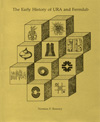 |
The Early History of URA and Fermilab Viewpoint of a URA President (1966-1981) Norman F. Ramsey |
 |
 |
![]()
Fermi National Accelerator Laboratory
Batavia, Illinois
Operated by Universities Research Association, Inc.
Under Contract with the United States Department of Energy
Introduction
Norman Ramsey holds a special place in Fermilab history. His long list of achievements begins with his education at Columbia University in New York and Cambridge University in England. During World War II his involvement with MIT's Radiation Laboratory led to the development of 3 cm radar and later he was leader of the Delivery Group of the Manhattan Project in Los Alamos. In 1947 he moved to Harvard University where he continues research and writing as the Higgins Professor of Physics, Emeritus. His research has ranged from atomic beams to particle physics.
Ramsey participated in the founding of Brookhaven National Laboratory and served as the first Chairman of its Physics Department. He was Chairman of the Atomic Energy Commission's High Energy Physics Advisory Panel in 1963 when the recommendation was made to build a 200 GeV accelerator. Ramsey was then instrumental in the creation of Fermilab as Founding President of the Universities Research Association (URA), the Laboratory's management organization, from 1966 until 1973. He smoothly oversaw the operation of the Laboratory from his URA offices in Washington when he was not personally visiting the site to be involved with Fermilab's successful development. Over the years Ramsey worked closely with Robert R. Wilson and Leon M. Lederman.
Ramsey has also served as Chairman of the General Advisory Committee of the Atomic Energy Commision, the Board of Governors of the American Institute of Physics, and of the Physics Sections of the National Academy of Sciences and the American Association for the Advancement of Science. He was President of the American Physical Society from 1978-79, and is a Foreign Associate of the French Academy of Science. He has won many awards, including the Rabi Prize, the Rumford Premium of the American Academy of Arts and Sciences, and the 1988 National Medal of Science. In 1989 he received the Nobel Prize for Physics for his research leading to the development of the hydrogen maser and the cesium atomic clock.
"The Early History of URA and Fermilab," Ramsey's historical retrospective, first appeared in Fermilab's 1987 Annual Report. It is reprinted in honor of the Laboratory's twenty-fifth anniversary.
Member Institutions
Universities Research Association, Inc.
1967 to 1992
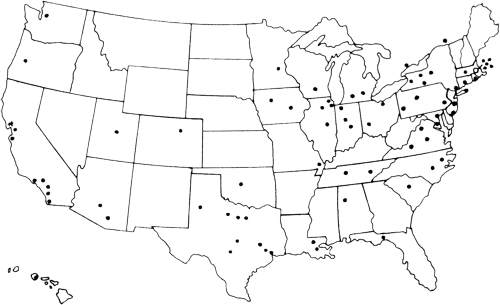
 Denotes 1967 charter members
Denotes 1967 charter members
| Alabama | Indiana | New Jersey | South Carolina | ||||
| University of Alabama-Tuscaloosa |  |
Indiana University |  |
Princeton University | University of South Carolina | ||
 |
University of Notre Dame | Rutgers University | |||||
| Arizona |  |
Purdue University | Tennessee | ||||
| Arizona State University | New York | University of Tenn.-Knoxville | |||||
| University of Arizona | Iowa |  |
Columbia University | Vanderbilt University | |||
 |
University of Iowa |  |
Cornell University | ||||
| California | Iowa State University |  |
University of Rochester | Texas | |||
 |
California Institute of Technology |  |
Rockefeller University | University of Houston | |||
 |
University of California-Berkley | Louisiana | State Univ. of NY-Buffalo | University of North Texas | |||
| University of California-Irvine | Louisiana State University | State Univ. of NY-Stony Brook | Prairie View A&M University | ||||
 |
University of California-Los Angeles |  |
Tulane University | Syracuse University |  |
Rice University | |
| University of California-San Diego | Southern Methodist University | ||||||
| San Francisco State University | Maryland | North Carolina | Texas A&M University | ||||
 |
Stanford University |  |
Johns Hopkins University |  |
Duke University | Texas Tech University | |
 |
University of Maryland |  |
University of North Carolina | University of Texas-Arlington | |||
| Colorado | University of Texas-Austin | ||||||
 |
University of Colorado-Boulder | Massachusetts | Ohio |  |
University of Texas-Dallas | ||
| Boston University | Case Western Reserve University | ||||||
| Connecticut |  |
Harvard University | Ohio State University | Utah | |||
 |
Yale University | University of Massachusetts | University of Utah | ||||
 |
Massachusetts Institute of Technology | Oklahoma | |||||
| Florida | Northeastern University | University of Oklahoma | Virginia | ||||
| Florida State University | Tufts University | University of Virginia | |||||
| Oregon | Virginia Polytechnic Institute | ||||||
| Hawaii | Michigan | University of Oregon | College of William and Mary | ||||
| University of Hawaii-Manoa |  |
University of Michigan | |||||
| Michigan State University | Pennsylvania | Washington | |||||
| Illinois | Carnegie Mellon University |  |
University of Washington | ||||
 |
University of Chicago | Minnesota |  |
University of Pennsylvania | |||
 |
University of Illinois-Urbana |  |
University of Minnesota | Pennsylvania State University | Wisconsin | ||
| Northern Illinois University | University of Pittsburgh |  |
University of Wisc.-Madison | ||||
 |
Northwestern University | Missouri | |||||
 |
Washington University | Rhode Island | Canada | ||||
| Brown University | McGill University | ||||||
| University of Toronto |
The Early History of URA and Fermilab
The beginnings of URA and Fermilab were rooted in the interest aroused by the fundamental discoveries made with the Brookhaven Cosmotron and the Lawrence Radiation Laboratory (LRL) Bevatron, now Lawrence Berkeley Laboratory (LBL), and by the successes of the alternate gradient focusing principle as applied to the Brookhaven 33GeV AGS and the similar accelerator at CERN. The agreement between design expectations and performance for these two accelerators encouraged designers to believe that much larger and less conservatively designed accelerators were feasible. As a result, a number of independent and interrelated design studies for new accelerators were in progress by 1960 at Caltech, LRL, Brookhaven, Wisconsin, Cornell, Yale, and a number of other universities and research centers. Among the most active participants in these studies were John and Hildred Blewett, Ernest Courant, Leon Lederman, Edward Lofgren, Edwin McMillan, Kenneth Robinson, Matthew Sands, Alvin Tollestrup, Robert Wilson, and Luke Yuan.
By late 1962, the AEC was confronted with more than a dozen proposals for accelerators at energies ranging from 10 to 1000 GeV. As a result, the President's Scientific Advisory Committee and the General Advisory Committee of the AEC appointed a joint PSAC/GAC Panel on High Energy, which I chaired, to "assess the future needs in high-energy accelerator physics." In May of 1963, this panel recommended: (1) prompt construction of a 200 GeV proton accelerator by LRL, (2) construction of colliding-beam storage rings at Brookhaven, (3) design studies at Brookhaven for a proton accelerator in the 600 to 1000-GeV range, (4) construction of a high-intensity 12.5-GeV proton accelerator by MURA "without permitting this to delay the steps toward higher energy," and (5) development and construction of electron-positron colliding-beams storage rings at Stanford. The Panel also recommended that "the larger accelerator installations should incorporate an administrative structure with national representation to assure that all proposals from qualified scientists be considered on equal footing."
Soon after the panel report was made public, PSAC convened a committee of accelerator users chaired by Myron Good, to review the Ramsey Panel recommendations. The Good Committee endorsed the Panel recommendations but stressed even more the need for national representation and that "outside groups should have a voice and responsibility in certain aspects of laboratory management." Further reviews with similar conclusions were made by a National Research Council Panel chaired by Robert Walker and in a 1965 Report on National Policy prepared by the AEC staff.
As a result of the disappointment in the Midwest with President Johnson's decision not to support the MURA proposal, and of continuing disagreements between the LRL management and its Advisory Committee on the extent to which the management of the new accelerator should have a national character, both the site and management questions were reopened.
The AEC then invited all states to submit site proposals for the accelerator and a total of 125 proposals were received from all but two states. During 1965 the Atomic Energy Commission reduced the number of qualified sites to 85 and passed these on to a panel of the National Academy of Sciences chaired by Emanuel Piore. Originally the panel was to select a single site, but at the urging of the joint Committee on Atomic Energy, the panel was asked to recommend the six best sites with the final choice to be made by the Atomic Energy Commission. In March of 1966, the Piore panel announced their selection of six possible sites in California, Colorado, Illinois, Michigan, New York, and Wisconsin.
With the opening of the site issue, Frederick Seitz, the President of the National Academy of Sciences, felt there should be some truly national organization available to construct and operate the accelerator at whatever site was finally selected. He called 25 university presidents to a meeting on January 17, 1965, to discuss the management of the 200-GeV accelerator. At this meeting, it was decided to establish a new organization, Universities Research Association, Inc., and to offer its services to manage the proposed accelerator wherever it might be located. In June of 1965, 34 presidents met to establish URA, which was incorporated on June 21, 1965, with two governing boards-a Council of Presidents representing each of the member universities, and a Board of Trustees actively responsible for the management of URA including the responsibility to elect the President and the Director. The Council of Presidents, at a meeting in November of 1965, elected Gaylord Harnwell to be the first Chairman of the Council of Presidents, elected one of its own members, Jacob Warner, to be interim President and completed the election process for members of the URA Board of Trustees. At that meeting the Council also "Resolved that the members of the Council declare themselves ready to support the decision of a site for the 200 GeV accelerator, upon the making and announcement of such decision by the Atomic Energy Commission."
The first regular meeting of the Board of Trustees of URA was held on December 12, 1965, and Henry D. Smyth was elected Chairman of the Board. At a later meeting in July of 1966, I was elected President of URA.
Because of the urging by the Joint Committee that the Atomic Energy Commission and not the scientists should make the final site selection, the AEC indicated they did not wish to make any contract or have any formal relation with URA until after the site was announced and requested that the URA staff refrain from expressing site preferences to anyone.
Until the site was selected, URA Trustees could do only limited specific tasks. The available time enabled the URA Trustees to carefully discuss plans and policies, such as a decision that the laboratory management should be a strong one with considerable independence, and that to encourage this policy the headquarters of URA should be in Washington rather than at any laboratory site. The Trustees also prepared for rapid action once the site was selected; for example, a list of 44 possible directors was compiled and extensively discussed, and draft proposals for a design-study contract were prepared. The possibility of modifying the accelerator proposal to permit a later increase in energy beyond 200 GeV was discussed with Glenn Seaborg, the AEC Chairman, who advised strongly against such a change for fear of jeopardizing the entire project.
Since URA could produce few publicly visible accomplishments prior to the selection of the site, many accelerator builders were very worried about the organization. Some feared that URA might never be able to accomplish anything, while others feared that the URA Trustees by themselves were secretly designing an accelerator and were not exposing it to public criticism.
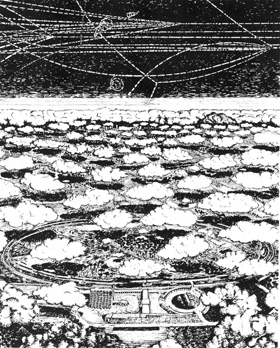 As it became apparent that the Commissioners would soon select a site, the regional rivalry became intense, and there was a real threat that the accelerator might never exist, since the disappointed regions could easily kill the project by their protests. To prevent this, I, as President of URA, arranged to speak to all Users Meetings to point out that it would be easy for any regional group to prevent the accelerator from going to the selected site, but it would be impossible to get it transferred to a different region. Most of these talks were given to Users Groups shortly before the site decision and were welcomed by the groups, since all hoped that the site might go their way. Unfortunately, due to the scheduling of the Users Meeting, the talk at Berkeley could not occur until shortly after the site had been selected at which time the disappointment in Berkeley was at its peak and the audience was inevitably unfriendly.
As it became apparent that the Commissioners would soon select a site, the regional rivalry became intense, and there was a real threat that the accelerator might never exist, since the disappointed regions could easily kill the project by their protests. To prevent this, I, as President of URA, arranged to speak to all Users Meetings to point out that it would be easy for any regional group to prevent the accelerator from going to the selected site, but it would be impossible to get it transferred to a different region. Most of these talks were given to Users Groups shortly before the site decision and were welcomed by the groups, since all hoped that the site might go their way. Unfortunately, due to the scheduling of the Users Meeting, the talk at Berkeley could not occur until shortly after the site had been selected at which time the disappointment in Berkeley was at its peak and the audience was inevitably unfriendly.
On December 16, 1966, the AEC announced that the site had been selected on a 6800-acre plot to be provided by the State of Illinois incorporating the town of Weston. After the site selection, URA moved into action rapidly with a meeting on December 19 followed in short order by three other meetings in less than two months. On December 19, Ed Lofgren, who had directed the previous Berkeley Design Studies, was asked to be Director of the URA Design Studies, which he declined three weeks later. On December 23, URA submitted to the AEC a proposal for a Design Study Contract with $200,000 initially requested. On January 5, 1967, a letter contract from the AEC was signed. Since December 16 was the earliest possible date for a proposal, this letter must come close to setting a U.S. government record for minimum time between the earliest possible proposal date and the signature on a letter contract.
At a Trustees meeting on January 15, the position of Director was offered to Robert Rathbun Wilson, whose new Cornell synchrotron had just been completed one year ahead of schedule. Although Bob Wilson indicated almost immediately that he was interested and would probably accept, he withheld his formal acceptance until the Atomic Energy Commission assured him that it would satisfy conditions which would enable the project to move rapidly and to be scientifically exciting. These agreements later proved to be of immense value to the project, but they did delay Bob's formal acceptance of the post until March 7 and caused some people to worry that URA would never be able to get started.
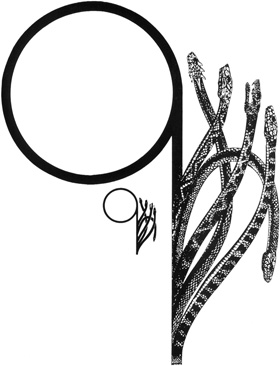 As a result of the delay in the Director's formal acceptance, he was not available for the critical hearings of the joint Committee on Atomic Energy in February 1967, so URA was represented by Kenneth Pitzer (Chairman of the Council of Presidents), Robert Bacher (Vice Chairman of URA), and by me. These hearings produced some pleasant as well as unpleasant surprises. Congressman Bates of Massachusetts, on his own initiative, was quite critical of the choice of energy and urged that the design be such as to permit a later increase to higher energy. His comments in the joint Committee Report opened up the possibility of this highly desirable increase in energy which was already favored by the URA Trustees. There were also vigorous criticisms in the hearings of the decision by the Office of Management and Budget to reduce the scope of the project from $350 million to $250 million, but these criticisms led to no increase in funds.
As a result of the delay in the Director's formal acceptance, he was not available for the critical hearings of the joint Committee on Atomic Energy in February 1967, so URA was represented by Kenneth Pitzer (Chairman of the Council of Presidents), Robert Bacher (Vice Chairman of URA), and by me. These hearings produced some pleasant as well as unpleasant surprises. Congressman Bates of Massachusetts, on his own initiative, was quite critical of the choice of energy and urged that the design be such as to permit a later increase to higher energy. His comments in the joint Committee Report opened up the possibility of this highly desirable increase in energy which was already favored by the URA Trustees. There were also vigorous criticisms in the hearings of the decision by the Office of Management and Budget to reduce the scope of the project from $350 million to $250 million, but these criticisms led to no increase in funds.
An unexpected objection to the location of the accelerator in a state which did not have open housing laws was raised at the hearings by Clarence Mitchell of the NAACP. In the long run, this criticism proved to be of great value to the National Accelerator Laboratory, since it made it possible for the Laboratory to develop much more imaginative programs for the training of minority employees. One year later the same NAACP representative strongly supported the Laboratory. At the 1967 hearings, vigorous criticisms of the location and proposed management were expressed by representatives of the regions which had lost out in the site selection, particularly by those from California. Congressman Hosmer stated at one point, "I understand they [URA] operate at the end of a telephone line in a borrowed room at 2101 Constitution Avenue." There was more validity to this criticism than even Congressman Hosmer knew: The National Academy was so tightly pressed for space that URA had just been moved from a borrowed room to a borrowed corridor. Despite the criticisms raised in the joint Committee hearing, authorization for design and engineering for the project was achieved during that session of Congress and $7.33 million was appropriated even though this was later reduced by executive order to $4.83 million. The appropriation of these first funds was in accordance with the philosophy on congressional relations that it is better to be criticized by a committee and get the money than to be praised and receive nothing. The open-housing issue had the effect that, in the most critical vote for the start of the project, many of the congressional supporters of the accelerator voted against it, and many of those who would normally have voted against it voted in favor.
On March 7, 1967, Robert Wilson was appointed Director of the National Accelerator Laboratory. In April of that year, URA sponsored a meeting of potential users to discuss physics at 200 GeV and to initiate the formation of a Users Organization which held its first regular meeting on December 9, 1967. In November of 1967, the AEC announced that DUSAF, which had worked with the Berkeley group, was selected to be architect-engineers for the 200-GeV project under a subcontract to URA.
During the spring of 1967, planning and designing were done at Cornell by Bob Wilson and consultants whom he assembled there, and on June 15 a group of staff members and consultants assembled in otherwise empty rooms at Oak Brook, Illinois, to begin intensive designs on the accelerator.
Design work on the accelerator proceeded rapidly during the summer and early fall of 1967. Many basic policy decisions were made including those to cut costs extensively, even at the risk of failure of some components and with the expectation of having to rectify the failures later. It was believed that this procedure would, in the long run, save much money and that it offered the best means for producing an accelerator with exciting scientific potentialities within the restricted budget. The magnet aperture was greatly reduced, piles under the magnet were eliminated, and the tunnel cross section was markedly diminished.
Other decisions at that time were to design the accelerator primarily for 200 GeV, but with the possibility of later expansion to 400-500 GeV and to pursue a much more rapid schedule than originally contemplated, with the first beam planned for July 1972 instead of July 1974, which would have been more in accord with previous plans. These plans were considered irresponsible by many in the field and were the source of vigorous criticisms and conflicts which were aired in many places including a meeting for this purpose at Oak Brook. As a result of these criticisms, the Laboratory proposals were considered with particular care by the Scientific Committee of the URA Trustees; and at a special meeting on October 12, 1967, the Trustees authorized the Director to submit the proposal. The first design reports were available on December 15. During this interval it was also decided that to save money, the project should move as rapidly as possible to the Weston site. Since no AEC funds were available for construction, URA expended several thousand dollars of its own funds for on-site buildings with the hope, which later proved valid, that URA could later be reimbursed once the construction project was approved.
During 1967, the staff of the accelerator design project grew rapidly; at the beginning of the year there were no staff members, but by the end of the year there were 52 staff members including the Director and the Deputy Director, Ned Goldwasser. By that time the DUSAF staff had grown to 26. During this same period, the Laboratory established a strong minority program including the sponsorship of training programs to provide the possibility for contractors to hire qualified minority employees.
On January 23, 1968, the first regular contract for construction was signed between URA and the Atomic Energy Commission. The funds appropriated during 1968 proved to be a severe disappointment, with the Laboratory having requested $75 million which was later reduced in the President's budget to $25 million and with a further reduction to a final appropriation of $12.074 million plus authority to spend $2.5 million, expenditure of which had been prevented by the Executive restrictions on allocations the preceding year. Also, unfortunately the funds initially were restricted to engineering and design, and only after vigorous appeals to the Commission, which in turn appealed to Congress, was the Laboratory permitted to do limited construction on designated projects, including the Linac building.
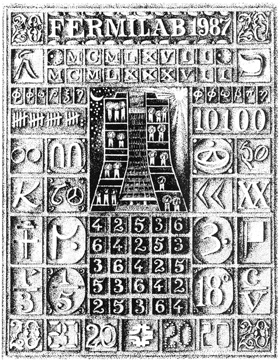 As part of the planning for the future, there was a study in 1968 of the feasibility and desirability of colliding-beams storage rings at NAL. During the summer of 1968 the first Users Summer Study at Aspen was held and proved to be of immense value in the planning for the accelerator.
As part of the planning for the future, there was a study in 1968 of the feasibility and desirability of colliding-beams storage rings at NAL. During the summer of 1968 the first Users Summer Study at Aspen was held and proved to be of immense value in the planning for the accelerator.
On July 11, 1968, the authorization for the full $250 million accelerator project was signed by the President. That year the first really large appropriation was obtained even though it was smaller than desired. The Laboratory had hoped for $102 million of construction funds, but this was reduced by OMB to $96 million and $70 million was finally appropriated. During 1969, construction work proceeded rapidly and successfully. That year the Program Committee to select experiments for the accelerator was established.
With Congressional authorization of the accelerator, with the appropriation of significant construction funds, and with successful initial operation and management, the future of the National Accelerator Laboratory was assured and its basic modes of operation were determined, so 1969 is an appropriate year in which to bring to an end this Early History.

Thanks
John Peoples ● Robert R. Wilson ● Leon M. Lederman ● Jane S. Wilson
S. Chandrasekhar ● Leonard Euler's Illustrator ● Angela Gonzales
Pablo Picasso ● East Indian Mythology ● 5th Century B.C. Athenian Vase
Painters and Potters ● Hans Bethe ● Fermilab Photography ● Al Johnson
John Keats ● Emily Dickinson ● Jean Lemke ● Marcel Proust ● Chocolate
Lillian Hoddeson ● William Shakespeare ● Norman F. Ramsey
19th Century Illustration Depicting a Mechanical Universe
5th Century B.C. Greek Mythology ● Leonardo da Vinci
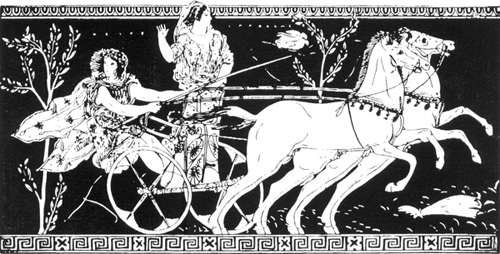
This publication was selected from the treasures of the Fermilab Archives.



